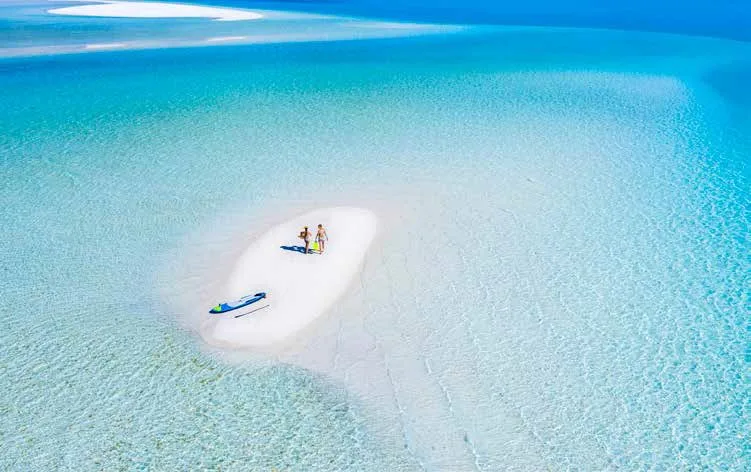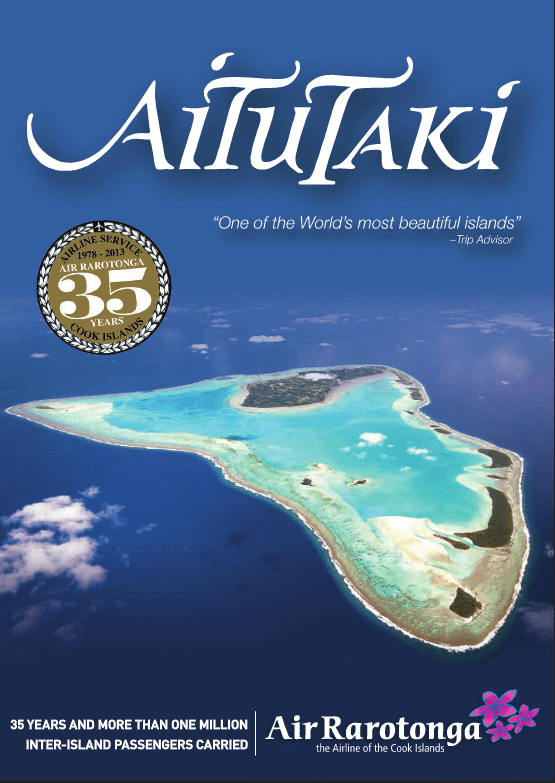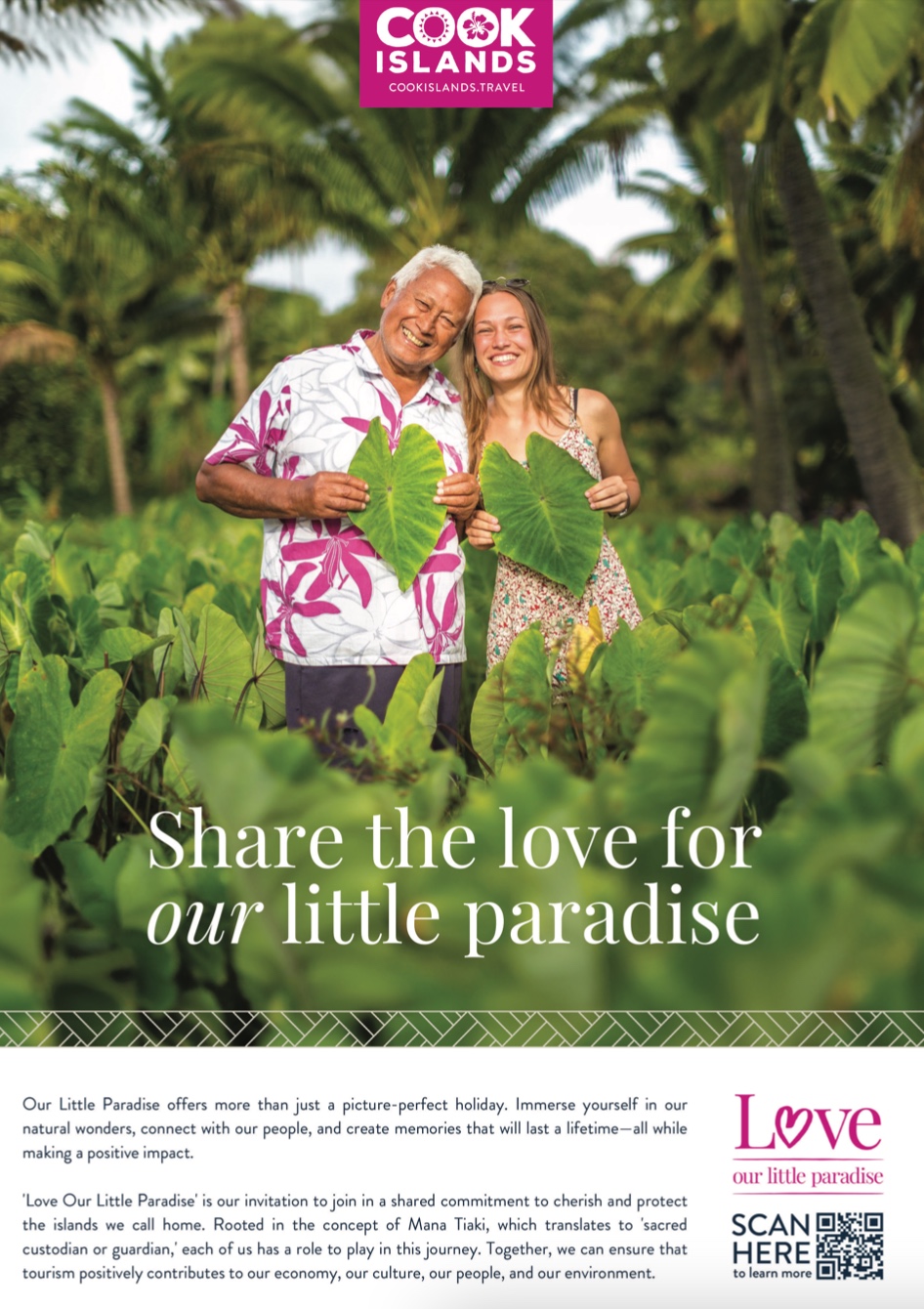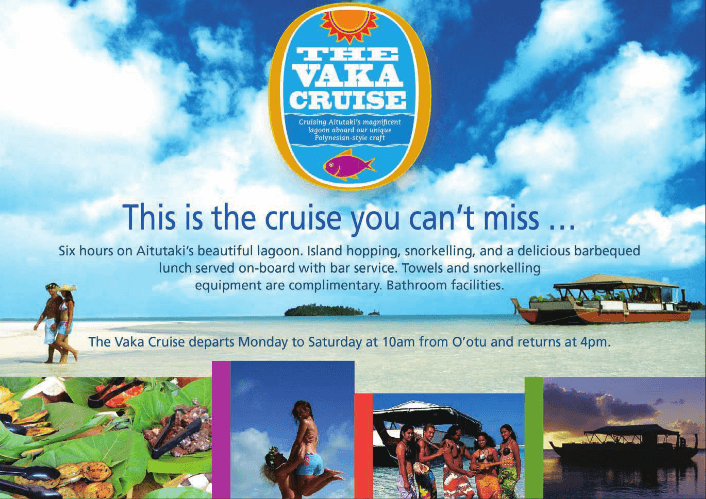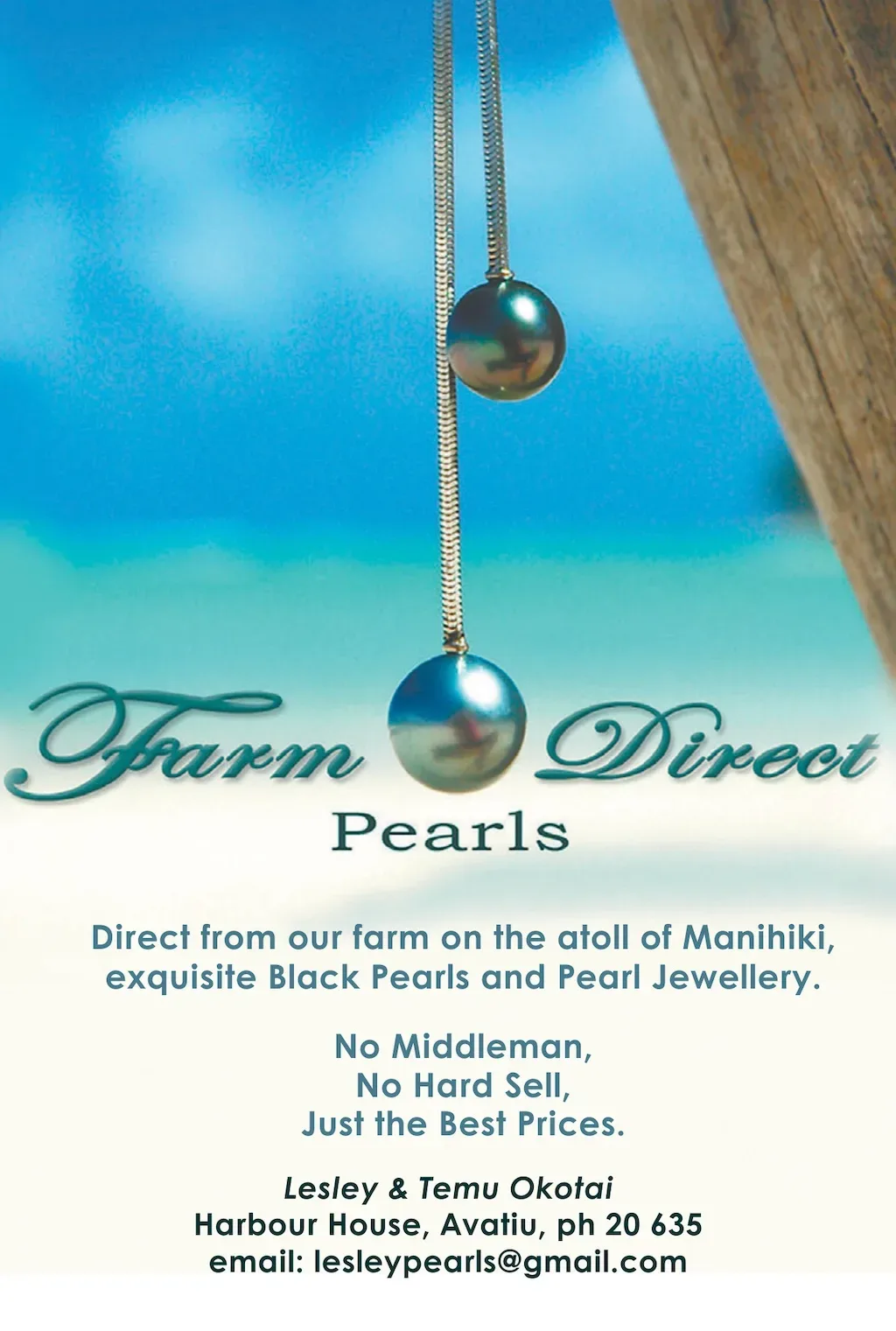The Cook Islands lie in the centre of the Polynesian triangle and are now easily reached from Australia on Air New Zealand’s direct service from Sydney (6 hours) or via Auckland with Air New Zealand Pacific Blue (Virgin Australia) and Jetstar.
The group is made up of 15 islands, scattered over two million square kilometres of the Pacific Ocean. They fall into two distinct groups. The Southern Group comprises nine islands including the capital, Avarua in Rarotonga, where the majority of the population resides. Domestic travel to the outer islands is provided by Air Rarotonga and six of the nine islands are accessible by regular air services. The more remote Northern Group has six islands, three of which, Manihiki, Penrhyn and Pukupuka, are accessible by air.
Capital and major centres
Vibrant and lively, Rarotonga is a hive of activity and its circular shape is dominated by high mountain peaks from which lush rainforests cascade to the palm-fringed shore. All visitors are welcomed at the Rarotonga International Airport with the warm local greeting Kia Orana (Greetings, may you live on) and a fragrant flower garland or ei.
Avarua is the main town on Rarotonga and has a great selection of shops, cafes and restaurants located around the island. From Rarotonga you can visit the Sister Islands such as Aitutaki, famous for its spectacular white sand beaches and azure lagoons, only a 40-minute flight away on Air Rarotonga, with several flights daily.
Atiu, northeast of Rarotonga, offers untouched beaches and coral reefs riddled with caves. Mangaia is surrounded by a narrow fringing reef backed by the formidable cliffs of makatea (raised coral) that reach heights of up to 60 metres. Mauke has caves located in the cliffs of the coral reef and Mitiaro offers subterranean pools and freshwater lakes that are full of itiki (freshwater eels), a local delicacy.
The people
Cook Islanders are of Polynesian descent, and are called Cook Island Maori. They are culturally and linguistically similar to Tahitians and New Zealand Maori and are an open, friendly people, happy to share their lifestyle.
Nature
The Cook Islands host a diverse range of flora and fauna. Marine turtles can be found in some of the outer islands and humpback whales can be sighted from July through to October. A protective reef encircles the islands. The lagoons play host to a variety of vivid and interesting coral and marine life. The Cook Islands has an interesting range of geological structures, from the high volcanic peaks of Rarotonga (653 metres) to the raised coral structure of Mangaia and Atiu and the coral atoll structures of the Northern Group.
The sights
The six CICC Churches around Rarotonga are magnificent landmarks built of coral and lime and well worth a visit, particularly on Sunday. Most people attend church and the air is vibrant with their beautiful singing called imene tuki. The ruins of the old Sunday School, built by the missionaries, that have been renovated and are now the Beachcomber Pearl and Art Gallery. In the harbour, remnants of the wreck of the SS Maitai that was sunk in 1916 remain and its main engine still protrudes from the reef.
You can trek through the Takuvaine/Avatiu valleys to see tropical vegetation or visit the Marae ‘Arai te Tonga’, a stone structure forming the royal court of the reigning ariki (high chief).
Where to stay
Rarotonga has a wide and varied selection of accommodation from first-class hotels and resorts, luxury villas and self-catering individual bungalows to backpacker facilities.
Aitutaki has a varied selection of accommodation, similar in quality to Rarotonga. Atiu has a varied but smaller selection of backpacker to mid-range accommodation available. Only basic needs are met on the islands of Mauke, Mitiaro (which recently launched a new homestay operation) and Mangaia.
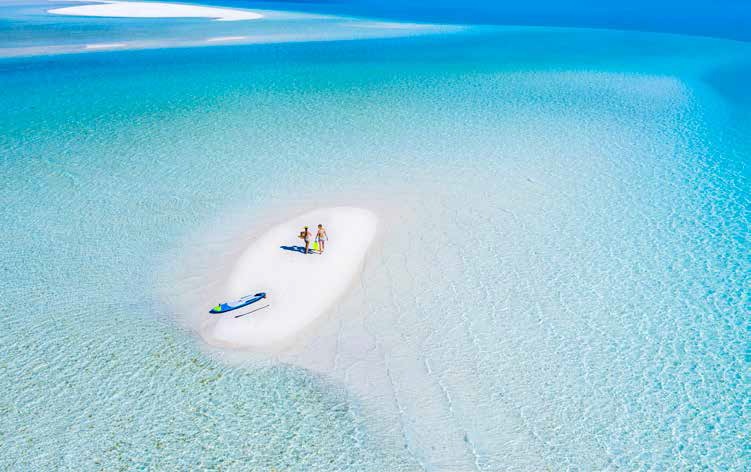
Visiting more than Rarotonga
All major inhabited islands are accessible by air. There are more than three daily flights from Rarotonga to Aitutaki. Flights to Atiu, Mangaia, Mauke and Mitiaro are scheduled many times a week. Atiu is recognised as the third island to visit in the Cook Islands behind Aitutaki and three times a week there is a convenient triangle air route around the three islands of Rarotonga, Aitutaki and Atiu. Air Rarotonga and Air New Zealand also have a code share agreement that allows you to book an international flight direct to and from Aitutaki that can be combined with the triangle route to reduce even more travel time.
In Mauke, you can explore the jungle-covered limestone rocks to find the famous Maire plant and organic tropical garden lush with fruit. Discover Mitiaro and its village home-stay and live with a local family in a traditional thatched roof hut. Mitiaro is ringed with beach coves and underground swimming caves with natural healing properties. Mangaia is dominated with raised limestone coral and has numerous caves that stretch into giant underground caverns. At 18 million plus years it is believed to be one of the oldest in the Pacific.
Getting around
Rarotonga is only 32 kilometres in circumference and one main road encircles the entire island, making it fairly easy to get around. Cook’s Buses, the local bus service, offers great public transport operating around Rarotonga in both directions, on regular day and evening schedules. The clockwise or anti-clockwise bus will pick you up and set you down anywhere on request.
Vehicles are driven on the left hand side of the road. By law Safety helmets must be worn by all visitors for both drivers and passengers. Drivers of all types of vehicles are required to have either a current international license or a Cook Islands driver’s license which can be obtained from the Police station in downtown Avarua.
Food and entertainment
Nightspots and bars will, on occasion, have live entertainment. A highlight of the Cook Islands is the Polynesian feast, umukai, prepared in the traditional style with foods such as ika mata (marinated fish with coconut sauce), eke (octopus), taro (tuba vegetable), rukau (cooked taro leaves similar to spinach), and kumara (sweet potato). An umukai is usually part of an island night show featured at major hotels. The delectable buffet and traditional dancing is all part of the culture of the Cook Islands and you can also experience this at the Highland Paradise and Te Vara Nui cultural attractions.
Wining and dining in Rarotonga is a treat with many excellent restaurants offering local and international cuisine in some very romantic locations.
Activities and shopping guide
There are a variety of activities on offer to suit any traveller. Relaxing lagoon cruises are available on two of the world’s most beautiful lagoons, Muri Lagoon on Rarotonga and the world famous Aitutaki Lagoon. Popular pastimes include sailing, windsurfing, stand-up paddle boarding, snorkelling and scuba diving. Boats are available for charter for deep-sea and game fishing. Shops are open 8am to 4pm Monday to Friday, and 8am to noon on Saturdays. On Saturday mornings the popular local market place, Punanga Nui, in downtown Avarua offers a range of tropical delicacies and local craft items.
Climate and clothing
Warm and sunny all year round. Rainy season is December to March. Average summer temperature is 26oC. Casual brief swimwear should be kept for beaches or poolside. Nude and topless sunbathing is unacceptable.
Currency
The NZ dollar, supplemented by local coinage (not negotiable outside the Cook Islands). The dollar coin bearing the symbol of the traditional god, Tangaroa, is popular with coin collectors, as is the $3 note. There are ATMs located on Rarotonga and Aitutaki. EFTPOS is available. Tipping is not customary but is appreciated.

